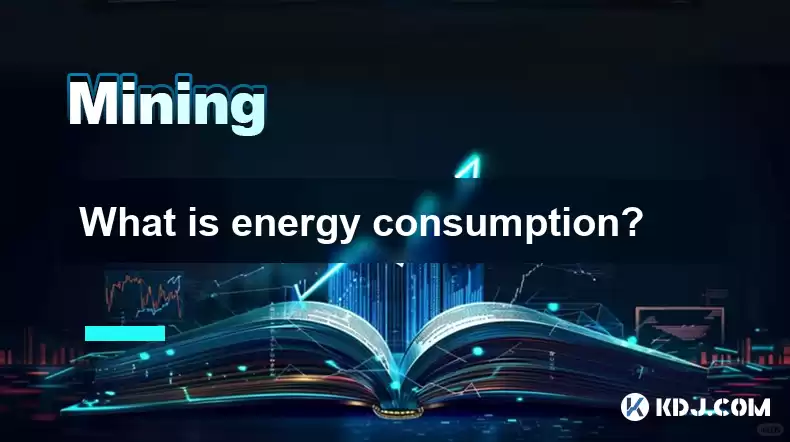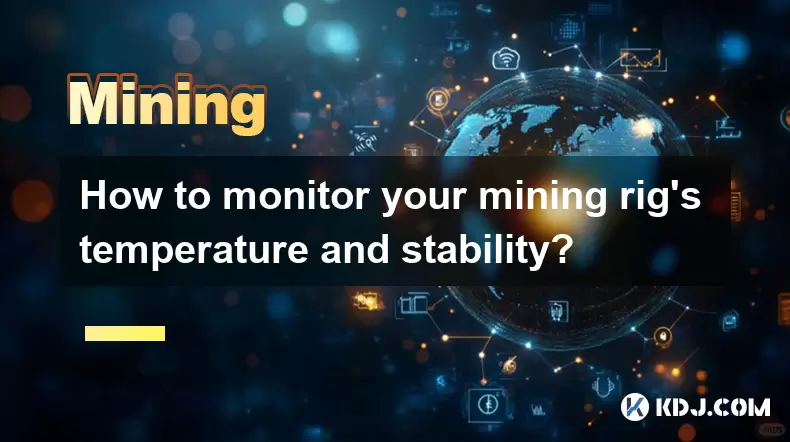-
 Bitcoin
Bitcoin $116800
0.20% -
 Ethereum
Ethereum $4192
5.51% -
 XRP
XRP $3.287
0.12% -
 Tether USDt
Tether USDt $1.000
0.00% -
 BNB
BNB $808.7
2.39% -
 Solana
Solana $180.4
2.23% -
 USDC
USDC $0.9999
0.01% -
 Dogecoin
Dogecoin $0.2390
6.80% -
 TRON
TRON $0.3365
-0.71% -
 Cardano
Cardano $0.8081
2.20% -
 Hyperliquid
Hyperliquid $43.74
6.50% -
 Chainlink
Chainlink $21.27
9.03% -
 Stellar
Stellar $0.4530
0.07% -
 Sui
Sui $3.908
3.00% -
 Bitcoin Cash
Bitcoin Cash $575.0
-1.02% -
 Hedera
Hedera $0.2632
0.61% -
 Avalanche
Avalanche $24.17
3.25% -
 Ethena USDe
Ethena USDe $1.001
0.02% -
 Litecoin
Litecoin $122.1
-0.24% -
 Toncoin
Toncoin $3.376
0.35% -
 UNUS SED LEO
UNUS SED LEO $8.981
-0.15% -
 Shiba Inu
Shiba Inu $0.00001373
5.86% -
 Uniswap
Uniswap $10.85
2.17% -
 Polkadot
Polkadot $4.080
4.03% -
 Dai
Dai $1.000
-0.02% -
 Pepe
Pepe $0.00001228
8.92% -
 Bitget Token
Bitget Token $4.506
0.09% -
 Cronos
Cronos $0.1581
3.76% -
 Monero
Monero $270.1
0.81% -
 Ethena
Ethena $0.7293
15.86%
What is energy consumption?
The energy consumption of cryptocurrencies varies depending on factors like consensus mechanism, network efficiency, and the hardware specifications of mining equipment.
Feb 20, 2025 at 01:42 am

Key Points
- Energy consumption in the cryptocurrency circle refers to the electricity usage associated with activities such as cryptocurrency mining, blockchain validation, and network operations.
- The energy consumption of cryptocurrencies varies significantly depending on factors such as the consensus mechanism used, network efficiency, and hardware specifications.
- Energy consumption has become a significant concern in the cryptocurrency world due to its environmental implications and the potential impact on electricity grids.
What is energy consumption?
Energy consumption refers to the amount of energy used by an activity, process, or device. In the context of cryptocurrencies, energy consumption pertains to the electricity utilized for various operations, including:
- Cryptocurrency Mining: The most energy-intensive aspect of the cryptocurrency industry, mining involves the use of specialized computers to solve complex mathematical problems in order to verify transactions and add new blocks to a blockchain network.
- Blockchain Validation: Once new blocks are added to the blockchain, nodes on the network verify the legitimacy of the transactions and the integrity of the blockchain itself, which also requires electricity usage.
- Network Operations: Maintaining a cryptocurrency network involves running servers, updating software, and performing regular maintenance tasks, all of which consume energy.
The energy consumption of a cryptocurrency network depends on a number of factors, including:
- Consensus Mechanism: The consensus mechanism used to validate transactions and add new blocks to the blockchain can have a significant impact on energy consumption. For example, Proof-of-Work (PoW) consensus mechanisms, which are used by Bitcoin and Ethereum, require extensive computational effort and thus consume more energy than other consensus mechanisms.
- Network Efficiency: The efficiency of a cryptocurrency network can also affect energy consumption. Networks that are designed to be more energy-efficient can reduce their energy usage without compromising security or performance.
- Hardware Specifications: The hardware used for mining and network operations can also impact energy consumption. Miners and nodes that use more efficient hardware can reduce their energy usage while maintaining or improving performance.
Environmental Concerns
The energy consumption of the cryptocurrency industry has become a significant concern due to its environmental implications. The electricity used for mining and other operations can contribute to greenhouse gas emissions and strain energy grids. As the cryptocurrency industry continues to grow, so does its energy consumption, highlighting the need for more sustainable practices.
Efforts to Reduce Energy Consumption
There are ongoing efforts within the cryptocurrency community to reduce energy consumption and mitigate environmental concerns. These efforts include:
- Development of More Energy-Efficient Consensus Mechanisms: Researchers and developers are working on developing new consensus mechanisms that are more energy-efficient than PoW, such as Proof-of-Stake (PoS) and Proof-of-Elapsed-Time (PoET).
- Optimization of Mining Hardware: Hardware manufacturers are developing more efficient mining equipment that consumes less energy while maintaining or improving performance.
- Use of Renewable Energy: Miners and network operators are increasingly using renewable energy sources, such as solar and wind power, to reduce their carbon footprint.
FAQs
Q: Which cryptocurrencies consume the most energy?
A: Bitcoin and Ethereum are the two most energy-intensive cryptocurrencies due to their use of the energy-intensive Proof-of-Work consensus mechanism.
Q: What is Proof-of-Work (PoW)?
A: Proof-of-Work is a consensus mechanism that requires miners to solve complex mathematical problems in order to verify transactions and add new blocks to the blockchain.
Q: What are some of the environmental concerns associated with cryptocurrency mining?
A: Cryptocurrency mining can contribute to greenhouse gas emissions and strain energy grids, particularly when non-renewable energy sources are used.
Q: What are the most energy-efficient cryptocurrencies?
A: Cryptocurrencies that use Proof-of-Stake (PoS), Proof-of-Elapsed-Time (PoET), or other energy-efficient consensus mechanisms are generally more energy-efficient than Bitcoin and Ethereum.
Q: What are some of the efforts being made to reduce the energy consumption of cryptocurrency mining?
A: Researchers and developers are working on developing new energy-efficient consensus mechanisms, hardware manufacturers are developing more efficient mining equipment, and miners and network operators are increasingly using renewable energy sources.
Disclaimer:info@kdj.com
The information provided is not trading advice. kdj.com does not assume any responsibility for any investments made based on the information provided in this article. Cryptocurrencies are highly volatile and it is highly recommended that you invest with caution after thorough research!
If you believe that the content used on this website infringes your copyright, please contact us immediately (info@kdj.com) and we will delete it promptly.
- Crypto Airdrops & Opportunities: What's Hot in August 2025
- 2025-08-09 22:30:12
- XRP, Cardano, and the Alluring Alternatives: A 2025 Crypto Landscape
- 2025-08-09 22:35:12
- Shiba Inu (SHIB) in the Crypto Landscape: Community, Trends, and Future Outlook
- 2025-08-09 20:30:12
- Solana, Unilabs, and Social Trends: Decoding the Crypto Buzz
- 2025-08-09 21:10:12
- Dogecoin, Meme Coins, and Layer Brett: Chasing the Next 100x
- 2025-08-09 20:50:12
- Crypto Presales in 2025: Are They Set to Outperform Launches?
- 2025-08-09 20:55:15
Related knowledge

What is "proof-of-work" and how does it relate to mining?
Aug 07,2025 at 02:03pm
Understanding the Concept of Proof-of-WorkProof-of-work (PoW) is a consensus mechanism used in blockchain networks to validate transactions and secure...

What are the differences between mining on Windows vs. Linux?
Aug 06,2025 at 11:29pm
Overview of Cryptocurrency Mining PlatformsCryptocurrency mining involves using computational power to solve complex cryptographic puzzles and validat...

How to use an old computer for cryptocurrency mining?
Aug 07,2025 at 12:42pm
Understanding the Feasibility of Using an Old Computer for MiningUsing an old computer for cryptocurrency mining may seem outdated, but it is still te...

Can you mine cryptocurrency using solar power?
Aug 07,2025 at 12:00am
Understanding the Basics of Cryptocurrency MiningCryptocurrency mining involves validating transactions on a blockchain network by solving complex cry...

How to monitor your mining rig's temperature and stability?
Aug 09,2025 at 09:43am
Understanding the Importance of Temperature Monitoring in Mining RigsMaintaining optimal temperature levels in a mining rig is essential for long-term...

How to build a mining rig inside a PC case?
Aug 06,2025 at 11:01pm
Understanding the Basics of a Mining Rig in a PC CaseBuilding a mining rig inside a PC case involves transforming a standard computer chassis into a d...

What is "proof-of-work" and how does it relate to mining?
Aug 07,2025 at 02:03pm
Understanding the Concept of Proof-of-WorkProof-of-work (PoW) is a consensus mechanism used in blockchain networks to validate transactions and secure...

What are the differences between mining on Windows vs. Linux?
Aug 06,2025 at 11:29pm
Overview of Cryptocurrency Mining PlatformsCryptocurrency mining involves using computational power to solve complex cryptographic puzzles and validat...

How to use an old computer for cryptocurrency mining?
Aug 07,2025 at 12:42pm
Understanding the Feasibility of Using an Old Computer for MiningUsing an old computer for cryptocurrency mining may seem outdated, but it is still te...

Can you mine cryptocurrency using solar power?
Aug 07,2025 at 12:00am
Understanding the Basics of Cryptocurrency MiningCryptocurrency mining involves validating transactions on a blockchain network by solving complex cry...

How to monitor your mining rig's temperature and stability?
Aug 09,2025 at 09:43am
Understanding the Importance of Temperature Monitoring in Mining RigsMaintaining optimal temperature levels in a mining rig is essential for long-term...

How to build a mining rig inside a PC case?
Aug 06,2025 at 11:01pm
Understanding the Basics of a Mining Rig in a PC CaseBuilding a mining rig inside a PC case involves transforming a standard computer chassis into a d...
See all articles

























































































